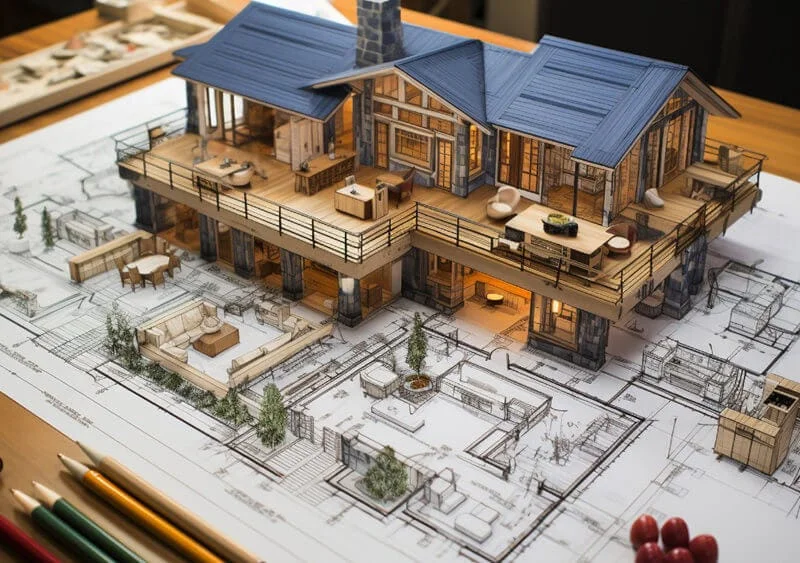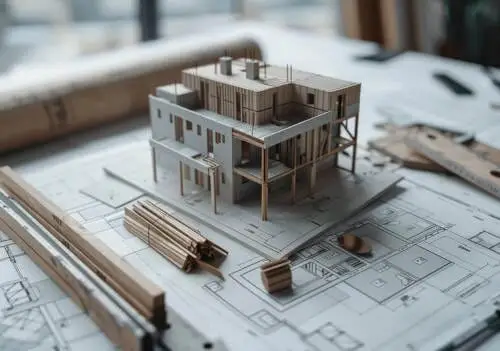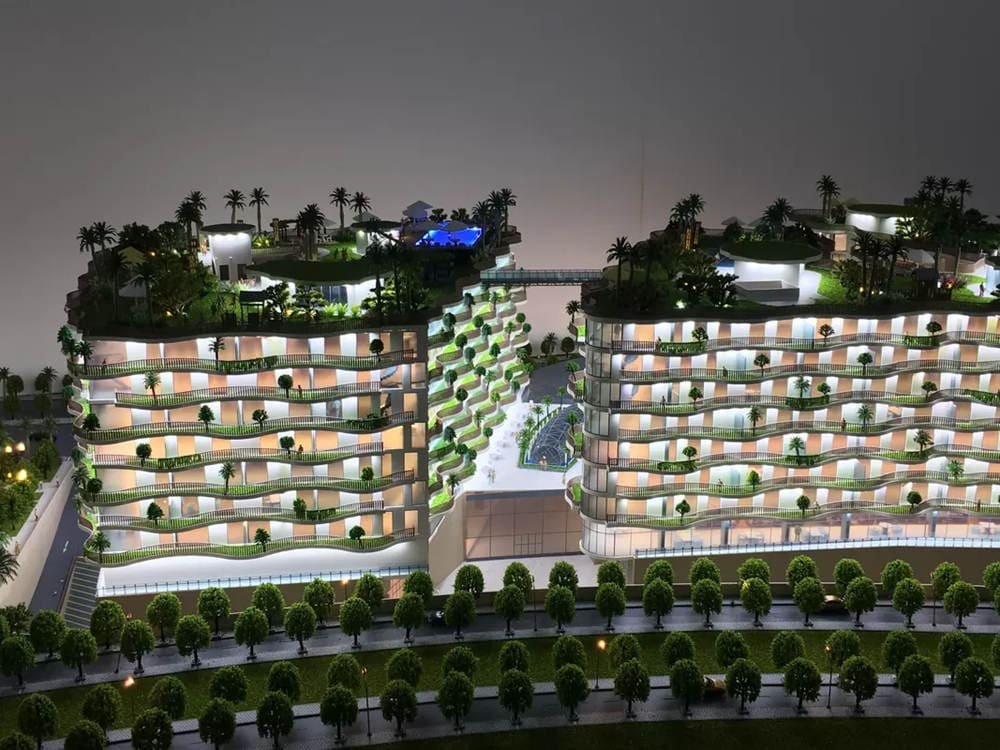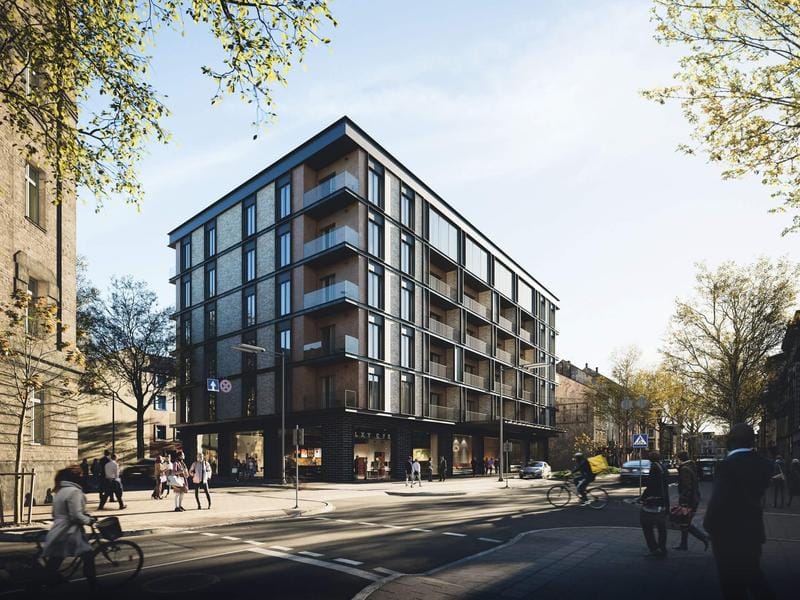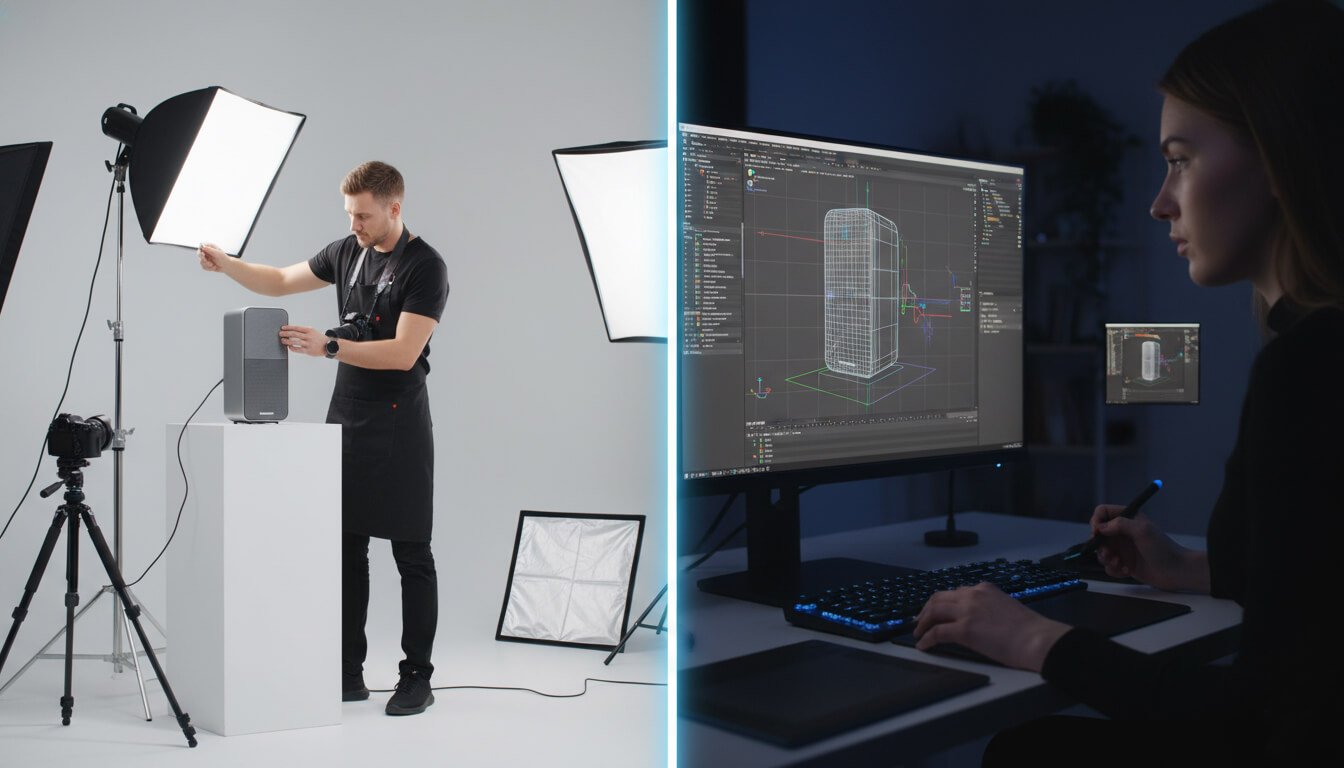Στον κόσμο της αρχιτεκτονικής, ένα φυσικό μοντέλο είναι ο απόλυτος αφηγητής. Μεταμορφώνει ένα διαμέρισμα, δισδιάστατη σχεδίαση σε ένα απτό αντικείμενο που οι πελάτες και οι συνεργάτες μπορούν πραγματικά να κατανοήσουν. Αλλά ακόμη και το πιο λεπτομερές μοντέλο μπορεί να αισθάνεται κρύο και άψυχο. Ποιο είναι το συστατικό που λείπει? Φως. Το φως είναι αυτό που δίνει ζωή σε ένα μοντέλο, μετατρέποντάς το από ένα απλό αντίγραφο σε δυναμικό, ευαίσθητος, και ισχυρή παρουσίαση μιας μελλοντικής πραγματικότητας.
Αυτός είναι ο πλήρης οδηγός σας. Θα καλύψουμε τα πάντα, από τα απλά βασικά των LED μέχρι την προηγμένη μαγεία του προγραμματιζόμενου, διαδραστικά συστήματα. Αυτός ο πόρος είναι κατασκευασμένος για όλους—φοιτητές αρχιτεκτονικής, επαγγελματίες κατασκευαστές μοντέλων, και εταιρείες σχεδίασης—που θέλουν να ανεβάσουν τη δουλειά τους στο επόμενο επίπεδο. Θα απαντήσουμε σε όλες τις ερωτήσεις σας, από “Τι φώτα να αγοράσω?” να “Πώς μπορώ να κάνω το μοντέλο να προσομοιώνει ένα πλήρες 24ωρο?”
Μέχρι το τέλος, θα ξέρεις όχι μόνο πως για να φωτίσετε το μοντέλο σας, αλλά Γιατί κάθε επιλογή έχει σημασία. Θα είστε έτοιμοι να δημιουργήσετε μια παρουσίαση που δεν θα δείχνει απλώς ένα κτίριο, αλλά αφηγείται την ιστορία του με τον πιο συναρπαστικό δυνατό τρόπο.
Για να κατανοήσετε πώς αυτό το κρίσιμο στοιχείο ταιριάζει στη μεγαλύτερη εικόνα, Συνιστούμε ιδιαίτερα τη σελίδα μας θεμελιώδους πυλώνας: Ο τελικός οδηγός για αρχιτεκτονικά μοντέλα υψηλού επιπέδου.
Πίνακας περιεχομένων
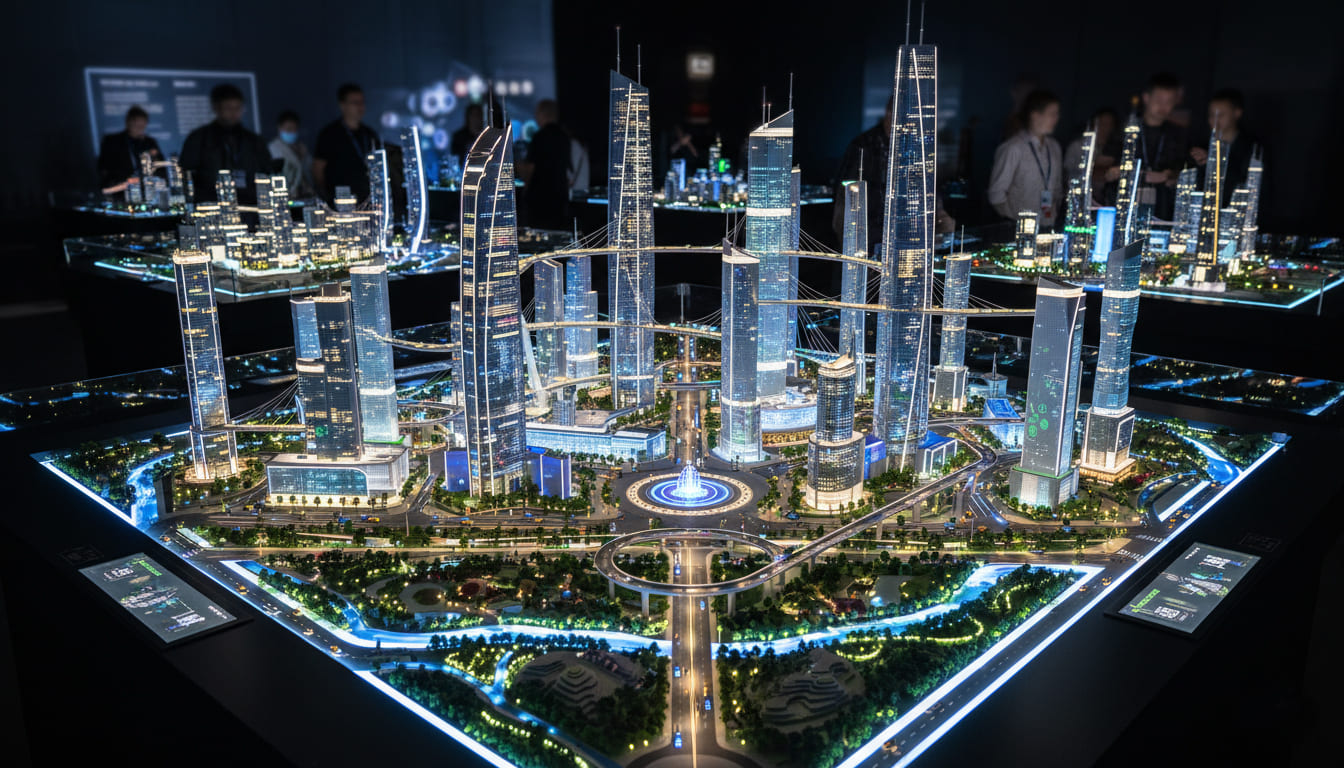
Κεφάλαιο 1: Ο “Γιατί” – Κατανόηση της Δύναμης του Φωτός
Πριν καν σκεφτείς την καλωδίωση, πρέπει να κατανοήσετε την αποστολή. Ο φωτισμός δεν είναι μόνο για να κάνει τα πράγματα ορατά. Είναι το πιο ισχυρό σας εργαλείο για να ελέγχετε την ιστορία του σχεδίου σας και να κάνετε τους ανθρώπους να αισθάνονται κάτι.
Περισσότερα από το να βλέπεις: Επικοινωνώντας το σχεδιαστικό σας όραμα
Σκεφτείτε το φως ως τον αθόρυβο συνεργάτη σας στο σχεδιασμό. Σας βοηθά να ξεκαθαρίσετε το όραμά σας και να δείξετε στους ανθρώπους τι πραγματικά έχει σημασία.
- Δημιουργία εστιακών σημείων: Πού θέλετε να κοιτάξουν πρώτα οι άνθρωποι? Ένας απαλός προβολέας σε μια μεγάλη είσοδο ή μια πιο φωτεινή λάμψη σε ένα δημόσιο αίθριο τραβούν αμέσως τα βλέμματα. Γίνεσαι σκηνοθέτης, καθοδηγώντας την προσοχή του θεατή στα πιο σημαντικά μέρη του σχεδιασμού σας.
- Καθορισμός σχήματος και χώρου: Το φως και η σκιά είναι αυτά που κάνουν τα πράγματα να φαίνονται τρισδιάστατα. Ένα μοντέλο με επίπεδη, ακόμη και ο φωτισμός φαίνεται βαρετός και στερείται βάθους. Ο επιδέξιος φωτισμός χαράζει το σχήμα του κτιρίου σας, αναδεικνύει τη μοναδική του μορφή, και το κάνει να νιώθει σταθερό και αληθινό.
- Αποκαλυπτικές Υφές: Ένα απαλό πλύσιμο φωτός σε έναν τοίχο από τούβλα με υφή ή μια αιχμηρή δέσμη σε ένα μεταλλικό πάνελ κάνει τα υλικά να αισθάνονται αυθεντικά. Βοηθά τους θεατές να εκτιμήσουν τις λεπτομέρειες που δουλέψατε τόσο σκληρά για να δημιουργήσετε, έστω και σε μικρή κλίμακα.
Ρύθμιση της διάθεσης: Η Ψυχολογία του Φωτός
Το φως έχει ισχυρή επίδραση στα συναισθήματά μας. Μπορείτε να το χρησιμοποιήσετε προς όφελός σας για να κάνετε τους ανθρώπους να αισθάνονται με έναν συγκεκριμένο τρόπο για το έργο σας, που είναι τεράστιο πλεονέκτημα σε μια παρουσίαση πελάτη.
“Το σωστό σχέδιο φωτισμού μπορεί να μετατρέψει ένα μοντέλο από ένα απλό αντίγραφο κλίμακας σε ένα αποτελεσματικό εργαλείο οπτικής επικοινωνίας, κάνοντας τους πελάτες να αισθάνονται την επιδιωκόμενη εμπειρία του χώρου.”
Το χρώμα του φωτός, γνωστή ως θερμοκρασία του, είναι κλειδί. Ζεστός, Το κιτρινωπό φως κάνει έναν χώρο να αισθάνεται άνετος και φιλόξενος, που είναι ιδανικό για κατοικία. Από την άλλη, δροσερός, Το μπλε-λευκό φως είναι μοντέρνο, καθαρός, και αποτελεσματική, καθιστώντας το μια εξαιρετική επιλογή για ένα κτίριο γραφείων ή ένα εργαστήριο υψηλής τεχνολογίας.
Το απόλυτο εργαλείο πωλήσεων: Κάνοντας το έργο σας ακαταμάχητο
Για αρχιτέκτονες και προγραμματιστές, ένα τρισδιάστατο μοντέλο είναι μια από τις καλύτερες μορφές μάρκετινγκ ακινήτων. Ένα όμορφα φωτισμένο μοντέλο αλλάζει το παιχνίδι. Δείχνει ανώτερο επίπεδο επαγγελματισμού και προσοχής στη λεπτομέρεια. Σας βοηθά να πουλάτε την εργασία σας πιο εύκολα, επειδή οι πελάτες θα εντυπωσιαστούν από το όραμα που παρουσιάζετε και θα είναι πιο πιθανό να επενδύσουν. Ένα σωστά φωτισμένο τρισδιάστατο μοντέλο θα προκαλεί πάντα την περιέργεια πιο αποτελεσματικά από ένα απλό, μη φωτισμένο.
Κεφάλαιο 2: A Modeler's Toolkit: Επιλέγοντας τα Φώτα σας
Για να δημιουργήσετε ένα ρεαλιστικό αποτέλεσμα, πρέπει να σκέφτεστε σαν σχεδιαστής φωτισμού και να χρησιμοποιείτε διαφορετικούς τύπους φωτός για διαφορετικές δουλειές. Η κατανόηση των επιλογών σας είναι το πρώτο βήμα για τη δημιουργία ενός υπέροχου σχεδίου φωτισμού.
Ο αδιαφιλονίκητος πρωταθλητής: Γιατί τα LED είναι η μόνη επιλογή
LED (Δίοδοι εκπομπής φωτός) έχουν αλλάξει εντελώς το παιχνίδι για την κατασκευή μοντέλων. Είναι καλύτερα από παλιομοδίτικα λαμπάκια από κάθε άποψη.
| Χαρακτηριστικό | LED (Σύγχρονη Επιλογή) | Λαμπτήρες πυρακτώσεως (Παλιά Μέθοδος) |
|---|---|---|
| Παραγωγή θερμότητας | Πολύ χαμηλή θερμοκρασία. Ασφαλές για πλαστικό, αφρός, και ξύλο. | Πολύ ζεστό. Μπορεί να λιώσει ή να παραμορφώσει ευαίσθητα υλικά μοντέλου. |
| Διάρκεια ζωής | 20,000 – 50,000 ώρες. Θα διαρκέσει για χρόνια. | Μικρή διάρκεια ζωής. Απαιτεί δύσκολη αντικατάσταση. |
| Μέγεθος | Διατίθεται σε μικροσκοπικά μεγέθη που κρύβονται εύκολα. | Ογκώδης και πολύ πιο δύσκολο να κρυφτεί μέσα σε ένα μοντέλο. |
| Χρήση Ενέργειας | Εξαιρετικά αποτελεσματικό. Εκατοντάδες μπορούν να λειτουργήσουν με ένα τροφοδοτικό. | Καταναλώνει πολύ περισσότερη ισχύ, απαιτούν μεγαλύτερη παροχή ρεύματος. |
Αποκωδικοποίηση του Lingo: Ένας απλός οδηγός για τους τύπους φωτισμού
Δεν είναι όλοι οι φωτισμοί ίδιοι. Για να κάνετε το μοντέλο σας να φαίνεται επαγγελματικό, πρέπει να χρησιμοποιήσετε ένα μείγμα διαφορετικών τύπων φωτισμού, ακριβώς όπως σε ένα πραγματικό κτίριο.
| Τύπος φωτισμού | Σκοπός | Πώς να το χρησιμοποιήσετε σε ένα μοντέλο |
|---|---|---|
| Φωτισμός περιβάλλοντος | Παρέχει γενικές, συνολικό φως για την αποφυγή σκληρών σκιών. | Χρησιμοποιήστε κρυφές λωρίδες LED γύρω από την οροφή ή τη βάση για να δημιουργήσετε ένα απαλό, ακόμη και λάμψη. |
| Φωτισμός έμφασης | Τονίζει συγκεκριμένα χαρακτηριστικά όπως προσόψεις, στήλες, ή τοπία. | Χρησιμοποιήστε μικροσκοπικούς προβολείς για να τραβήξετε την προσοχή σε μοναδικές σχεδιαστικές λεπτομέρειες. |
| Φωτισμός εργασιών | Δημιουργεί έντονο φως σε μικρές περιοχές για λεπτομέρεια, όπως μέσα στα δωμάτια. | Χρησιμοποιήστε μικροσκοπικό, μεμονωμένα LED για να ανάβουν τα γραφεία, έπιπλα, ή σκάλες. |
| Προβολή | Μια ισχυρή μορφή φωτισμού έμφασης που χρησιμοποιείται για δραματικό αποτέλεσμα σε ένα εστιακό σημείο. | Χρησιμοποιήστε μια εστιασμένη δέσμη από πάνω ή από το πλάι για να επισημάνετε την κύρια είσοδο ή ένα ιδιαίτερο χαρακτηριστικό. |
Κεφάλαιο 3: Το Σχέδιο: Σχεδιάζοντας το σύστημα φωτισμού σας
Μια εξαιρετική ρύθμιση φωτισμού δεν συμβαίνει τυχαία. Ο σωστός προγραμματισμός είναι 90% του έργου και είναι το μυστικό για μια εγκατάσταση χωρίς άγχος. Πρέπει να κάνετε αυτόν τον προγραμματισμό προτού ξεκινάς να φτιάχνεις το μοντέλο σου.
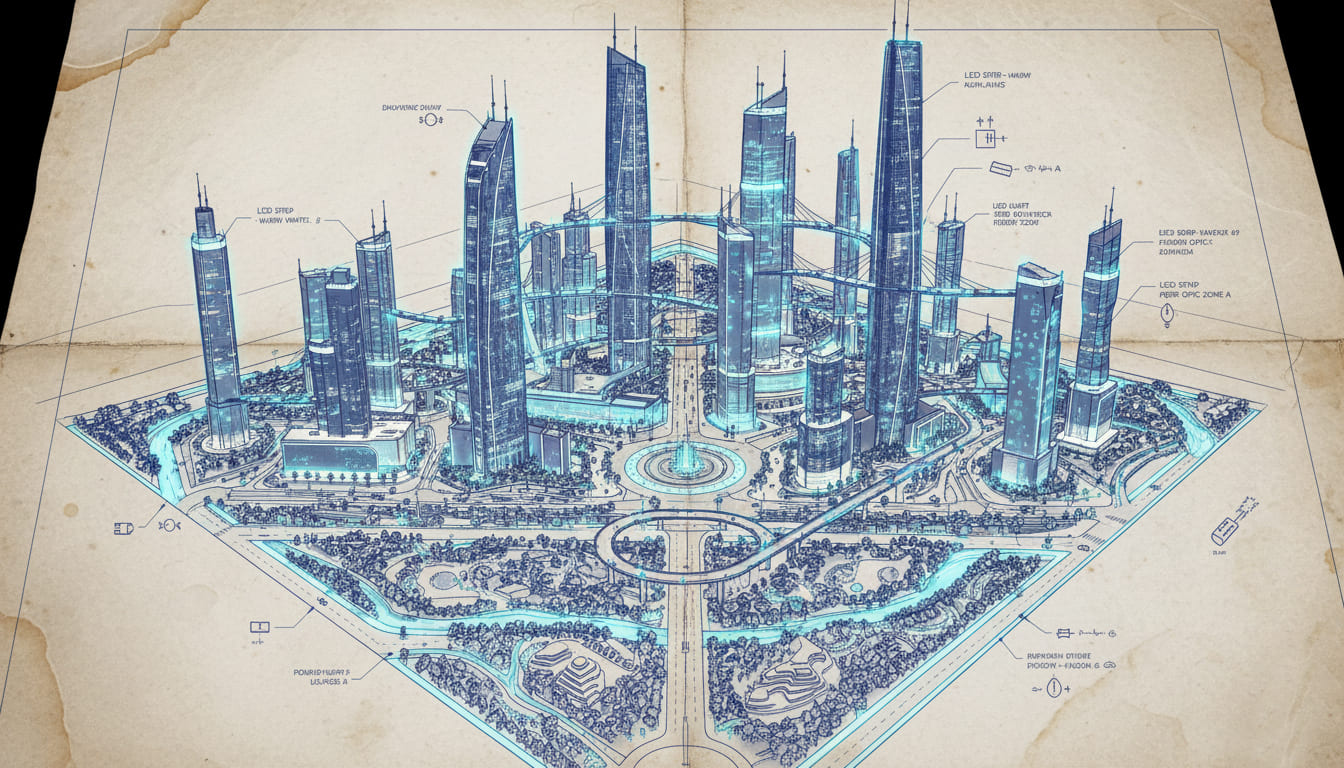
Βήμα 1: Ξεκινήστε με μια ιστορία, Όχι διακόπτης
Πρώτα, κάντε στον εαυτό σας τα μεγάλα ερωτήματα:
- Ποιος είναι ο στόχος? Είναι αυτό το μοντέλο για έλεγχο πελάτη, ένα κέντρο πωλήσεων, ή ένα μουσείο?
- Ποια είναι η αίσθηση? Θέλετε να αισθάνεστε σαν απασχολημένος, ζωντανή κοινότητα ή μια ησυχία, ειρηνικό σπίτι?
- Ποια είναι τα στοιχεία του ήρωα? Ποια είναι τα τρία κορυφαία χαρακτηριστικά που πρέπει οπωσδήποτε να ξεχωρίζουν?
Βήμα 2: Σχεδιάζοντας τον οδικό σας ηλεκτρικό χάρτη
Αυτό είναι σαν να δημιουργείτε ένα σχέδιο για τα φώτα σας.
- Πάρτε τα σχέδια: Ξεκινήστε με τα αρχιτεκτονικά σχέδια του κτιρίου σας.
- Δημιουργήστε ένα στρώμα φωτισμού: Σε εκτύπωση ή σε πρόγραμμα σχεδίασης, δημιουργήστε ένα ξεχωριστό στρώμα μόνο για το σχέδιο φωτισμού σας.
- Τοποθετήστε τα φώτα σας: Σημειώστε το ακριβές σημείο για κάθε φως. Να είστε συγκεκριμένοι! Σημειώστε αν είναι για περιβάλλον, προφορά, ή φωτισμός εργασιών και τι χρώμα πρέπει να είναι.
- Σχεδιάστε τα καλώδια: Αυτό είναι κρίσιμο. Σχεδιάστε τη διαδρομή που θα ακολουθήσει κάθε καλώδιο. Πρέπει να σχεδιάσετε κρυφά κανάλια στα δάπεδα και τους τοίχους, ώστε να μην φαίνεται τίποτα στο τελικό μοντέλο.
Βήμα 3: Ενισχύοντας το Όραμά σας (Χωρίς το Burnout)
Πρέπει να βεβαιωθείτε ότι έχετε αρκετή ισχύ για όλα τα φώτα σας.
“Ένα γρήγορο και βρώμικο κόλπο συγκόλλησης είναι να κολλήσετε τα καλώδια σας σε ένα κομμάτι ξύλινο ξύλο. Αυτό τους εμποδίζει να μετακινούνται και κάνει τη δουλειά πολύ πιο εύκολη.”
Κάντε μια λίστα με κάθε LED στο σχέδιό σας. Μάθετε πόση τάση και ρεύμα χρειάζεται το καθένα (αυτές οι πληροφορίες βρίσκονται στη συσκευασία ή στον ιστότοπο του κατασκευαστή). Προσθέστε το συνολικό ρεύμα για όλα τα φώτα και προσθέστε περίπου 20% επιπλέον για να είσαι ασφαλής. Τότε, επιλέξτε ένα τροφοδοτικό που μπορεί να παρέχει τη σωστή τάση και να χειριστεί το συνολικό ρεύμα. Ένα τροφοδοτικό που είναι πολύ μικρό θα υπερθερμανθεί και θα αστοχήσει.
Ένα απλό σύστημα συνεχούς ρεύματος 9-volt έως 12-volt είναι κοινό για μοντέλα σιδηροδρόμων και λειτουργεί τέλεια για αρχιτεκτονικά μοντέλα. Μπορείτε συχνά να αγοράσετε προ-καλωδιωμένες λυχνίες LED που έχουν ήδη συνδεδεμένη αντίσταση, καθιστώντας τα έτοιμα να συνδέσουν μια πηγή ρεύματος 9V ή 12V απευθείας από τη συσκευασία. Αυτός είναι ο εύκολος τρόπος για να το κάνετε!
Βήμα 4: Ποιος έχει τον έλεγχο? Επιλογή του συστήματος ελέγχου σας
Πώς θα ανάψετε και θα σβήσετε τα φώτα?
- Απλό σύστημα: Ένας μόνος κύριος διακόπτης που ενεργοποιεί τα πάντα ταυτόχρονα.
- Ζωνοποιημένο σύστημα: Μερικοί διαφορετικοί διακόπτες που ελέγχουν ξεχωριστές περιοχές, σαν “Εξωτερικός,” “Πρώτος όροφος,” και “Δεύτερο πάτωμα.”
- Προηγμένο σύστημα: Ένα προγραμματιζόμενο σύστημα συνδεδεμένο σε υπολογιστή ή tablet. Αυτό σας επιτρέπει να δημιουργήσετε καταπληκτικά, δυναμικές σκηνές, όπως η προσομοίωση διαφορετικών ωρών της ημέρας ή η δυνατότητα στους πελάτες να φωτίζουν συγκεκριμένα διαμερίσματα αγγίζοντας μια οθόνη. Για περισσότερα σχετικά με αυτό, μεταβείτε στην ενότητα μας Προηγμένες Τεχνικές.
Κεφάλαιο 4: Hands-On: Ο βασικός οδηγός καλωδίωσης και εγκατάστασης
Τώρα ήρθε η ώρα να λερώσετε τα χέρια σας. Η χρήση των κατάλληλων εργαλείων και τεχνικών θα κάνει τη διαφορά ανάμεσα σε ένα απογοητευτικό χάος και ένα επαγγελματικό αριστούργημα.
Τα βασικά στοιχεία του εργαστηρίου σας: Εργαλεία του Εμπορίου
Η κατοχή των κατάλληλων εργαλείων κάνει κάθε δουλειά πιο εύκολη. Εδώ είναι μια ανάλυση του τι θα χρειαστείτε.
| Εργαλείο | Γιατί το χρειάζεστε | Αρχάριος ή Επαγγελματίας? |
|---|---|---|
| Συγκολλητικό Σίδερο Ελεγχόμενης Θερμοκρασίας | Σας επιτρέπει να ρυθμίσετε την τέλεια θερμοκρασία για ευαίσθητα ηλεκτρονικά, ώστε να μην τα καίτε. | Pro (αλλά συνιστάται ιδιαίτερα και για αρχάριους!) |
| Συγκόλληση Fine-Gauge & Ροή | Η λεπτή συγκόλληση και η πάστα ροής σας βοηθούν να καθαρίσετε, ισχυρές συνδέσεις σε μικροσκοπικά μέρη. | Καθένας |
| “Χέρια Βοήθειας” Εργαλείο | Μια βάση με κλιπ που κρατά τα μέρη σας σταθερά, ώστε να μπορείτε να κολλήσετε και με τα δύο χέρια. | Καθένας |
| Ψηφιακό πολύμετρο | Ένα απαραίτητο εργαλείο για τον έλεγχο των συνδέσεών σας και την αντιμετώπιση προβλημάτων. | Καθένας |
| Τσιμπιδάκια Fine-Point | Για χειρισμό και τοποθέτηση μικροσκοπικών LED χωρίς να τα χάσετε. | Καθένας |
The Pro's Secret: Πώς να συγκολλήσετε μικροσκοπικά LED σαν χειρουργός
Συγκόλληση μικροσκοπικής συσκευής επιφανειακής βάσης (SMD) Τα LED μπορεί να είναι δύσκολα, αλλά αυτή η μέθοδος το κάνει πολύ πιο εύκολο. Το μυστικό είναι “Σκάσε”
- Ασφαλίστε το LED: Τοποθετήστε το μικροσκοπικό LED στο εργαλείο χεριών βοήθειας.
- Προετοιμάστε το καλώδιο: Χρησιμοποιήστε ένα πολύ λεπτό σύρμα. Ξύστε τη χρωματιστή επίστρωση από την ίδια την άκρη.
- Κασσίτερος και τα δύο μέρη: Αυτό είναι το κλειδί! Εφαρμόστε ένα μικροσκοπικό κομμάτι ροής και στη συνέχεια ένα μικρό σφαιρίδιο συγκόλλησης στο μεταλλικό μαξιλαράκι επαφής του LED. Κάντε το ίδιο για την άκρη του καλωδίου σας.
- Κάντε τη σύνδεση: Κρατήστε το κονσερβοποιημένο σύρμα πάνω στο κονσερβοποιημένο μαξιλαράκι. Αγγίξτε τα για λίγο με το ζεστό σας κολλητήρι. Η συγκόλληση και στα δύο μέρη θα λιώσει και θα λιώσει αμέσως. Χρειάζεται λιγότερο από ένα δευτερόλεπτο!

Φωτομόνωση: Το κλειδί για τον επαγγελματικό ρεαλισμό
Αυτό είναι ένα από τα πιο σημαντικά βήματα. Εάν δεν το κάνετε αυτό, τα λεπτά τοιχώματα του μοντέλου σας θα λάμπουν, και θα μοιάζει με φτηνό παιχνίδι. Αυτό λέγεται “διαρροή φωτός.”
Η λύση είναι απλή: πριν συναρμολογήσετε το μοντέλο, ζωγραφίζω το μέσα όλων των τοίχων και της οροφής με δύο ή τρία χέρια αδιαφανές μαύρο χρώμα. Μόλις στεγνώσει, μπορείτε να βάψετε το τελικό χρώμα του εσωτερικού σας πάνω από το μαύρο. Το μαύρο στρώμα θα εμποδίσει εντελώς το φως να λάμπει μέσα από τους τοίχους. Για ακόμα καλύτερα αποτελέσματα, μπορείτε να φτιάξετε μικρά, ξεχωριστά κουτιά από χαρτόνι ή αφρώδες πυρήνα για κάθε δωμάτιο. Αυτή η μέθοδος, αποδεικνύεται από πολλούς έμπειρους μοντελιστές, παγιδεύει εντελώς το φως και αποτρέπει τη διαρροή του σε παρακείμενα δωμάτια.
Κρύβοντας τη Μαγεία: Πώς να κρύψετε τα καλώδια
Ο καλύτερος φωτισμός είναι αυτός που δεν μπορείς να δεις την τεχνολογία. Τα καλώδια πρέπει να είναι εντελώς αόρατα.
- Σχεδιάζω μπροστά: Καθώς χτίζετε, δημιουργήστε κανάλια για τα καλώδιά σας. Μπορείτε να το κάνετε αυτό κολλώντας δύο κομμάτια δαπέδου μεταξύ τους με ένα μικρό κενό μεταξύ τους, ή χαράσσοντας μια μικρή αυλάκωση στο πίσω μέρος ενός πάνελ τοίχου.
- Χρησιμοποιήστε σωλήνες: Για κάθετη διέλευση καλωδίων μέσω πολλών ορόφων, μπορείτε να κρύψετε μικρούς πλαστικούς ή ορειχάλκινους σωλήνες μέσα στο μοντέλο, μεταμφιεσμένοι σε σωλήνες ή κολώνες.
- Να είστε τακτοποιημένοι στη βάση: Όλα τα καλώδιά σας πρέπει να κατέβουν στη βάση του μοντέλου. Χρησιμοποιήστε βιδωτά μπλοκ ακροδεκτών για να διατηρήσετε τις συνδέσεις σας οργανωμένες. Μην τα στριμώχνετε μόνο μεταξύ τους! Και φροντίστε να επισημαίνετε κάθε καλώδιο, ώστε να γνωρίζετε τι ελέγχει.
Κεφάλαιο 5: Προηγμένες τεχνικές για εμφάνιση που κόβει την ανάσα
Έτοιμοι να μεταφέρετε το μοντέλο σας στο επόμενο επίπεδο? Αυτές οι προηγμένες τεχνικές μπορούν να δημιουργήσουν μια πραγματικά αξέχαστη εμπειρία για το κοινό σας.
The Interactive Revolution: Touchscreens and Individual Control
Αυτή είναι η τεχνολογία αιχμής που χρησιμοποιείται σε προηγμένα κέντρα πωλήσεων ακινήτων. Το μυστικό είναι η χρήση ενός ειδικού τύπου LED που ονομάζεται an “addressable LED.”
Κάθε ένα από αυτά τα LED έχει ένα μικροσκοπικό τσιπ υπολογιστή που του δίνει έναν μοναδικό αριθμό ταυτότητας, like a street address. Instead of complex wiring, all the LEDs are connected in a simple line, one after the other. This is called a “daisy chain.” Ένας ελεγκτής στέλνει μια εντολή κάτω από το μόνο καλώδιο, σαν “Turn on LED #404,” και μόνο το LED με τη συγκεκριμένη διεύθυνση θα ανάψει.
This system is controlled by software, που μπορεί να συνδεθεί με κάτι τόσο απλό όπως ένα υπολογιστικό φύλλο Excel. This makes it incredibly flexible. Ο κατασκευαστής μοντέλων συνδέει τα φώτα, και ένας προγραμματιστής τα συνδέει με μια διεπαφή οθόνης αφής. Ένας πιθανός αγοραστής μπορεί στη συνέχεια να περπατήσει, πατήστε ένα κουμπί για “2-υπνοδωμάτια διαμερίσματα στον 4ο όροφο,” και παρακολουθήστε καθώς μόνο αυτές οι μονάδες ανάβουν στο μοντέλο. Είναι ένα ισχυρό και συναρπαστικό εργαλείο πωλήσεων που κάνει την κατανόηση του έργου αβίαστη.
Δημιουργία Ειδικών Εφέ: Φλόγες που τρεμοπαίζουν και άλλα
Θέλετε να προσθέσετε ένα τζάκι που τρεμοπαίζει στο μοντέλο σας? Ή ένα άνετο, λαμπτήρας κηροζίνης που τρεμοπαίζει σε μια παλιά κατασκευή? Ο ευκολότερος τρόπος είναι να αγοράσετε ειδικά LED που τρεμοπαίζουν. Αυτά έχουν ενσωματωμένο ένα μικροσκοπικό τσιπ που δημιουργεί το εφέ για εσάς. Είναι έτοιμοι να βγουν αμέσως από τη συσκευασία. Για ακόμα περισσότερο ρεαλισμό, μπορείτε να συνδυάσετε ένα LED που τρεμοπαίζει με ένα σταθερό LED του ίδιου χρώματος. Αυτό δημιουργεί μια πιο λεπτή, φυσικό αποτέλεσμα που μοιάζει με πραγματική φλόγα.
Κεφάλαιο 6: Αντιμετώπιση προβλημάτων: Όταν σβήνουν τα φώτα
Έστω και με προσεκτικό σχεδιασμό, τα πράγματα μπορεί να πάνε στραβά. Ακολουθεί ένας γρήγορος οδηγός για την επίλυση κοινών προβλημάτων.
| Πρόβλημα | Πιθανή αιτία | Πώς να το διορθώσετε |
|---|---|---|
| Ένα LED δεν λειτουργεί. | Τα καλώδια είναι προς τα πίσω (η πολικότητα είναι λάθος), ή είναι κακή συγκόλληση. | Δοκιμάστε να αλλάξετε τα θετικά και αρνητικά καλώδια. Αν αυτό δεν λειτουργεί, θερμάνετε ξανά τη σύνδεση συγκόλλησης. |
| Όλο το μοντέλο είναι σκοτεινό. | Το τροφοδοτικό είναι αποσυνδεδεμένο, ή υπάρχει βραχυκύκλωμα. | Ελέγξτε πρώτα το τροφοδοτικό σας. Τότε, αναζητήστε τυχόν γυμνά καλώδια που μπορεί να αγγίζουν το ένα το άλλο. |
| Οι τοίχοι του μοντέλου είναι λαμπεροί. | Δεν φωτοπροστασίασες σωστά το εσωτερικό. | Αυτό είναι δύσκολο να διορθωθεί μετά τη συναρμολόγηση. Ίσως χρειαστεί να δοκιμάσετε να ρίξετε μαύρη μπογιά μέσα. Γι' αυτό είναι τόσο σημαντικός ο προγραμματισμός! |
| Τα φώτα είναι πολύ φωτεινά. | Η τιμή της αντίστασης είναι πολύ χαμηλή, ή το LED είναι πολύ ισχυρό. | Μπορείτε να προσθέσετε μια αντίσταση υψηλότερης τιμής για να μειώσετε τη φωτεινότητα του LED. Μπορείτε επίσης να προσθέσετε έναν διαχύτη (σαν παγωμένο πλαστικό) για να μαλακώσει το φως. |
Τελικές Σκέψεις: Το Όραμά σας, Φωτεινός
Ο φωτισμός ενός αρχιτεκτονικού μοντέλου είναι μια χειροτεχνία που συνδυάζει την τεχνική ακρίβεια με το καλλιτεχνικό όραμα. Απαιτεί προσεκτικό σχεδιασμό και σταθερό χέρι, αλλά τα αποτελέσματα αξίζουν περισσότερο από την προσπάθεια.
Ακολουθώντας τα βήματα σε αυτόν τον οδηγό—από τον σχεδιασμό και τη φωτομόνωση έως τη συγκόλληση και την αντιμετώπιση προβλημάτων—έχετε την πλήρη εργαλειοθήκη για να δημιουργήσετε επαγγελματίες, εντυπωσιακά αποτελέσματα. Ο στόχος είναι να εξαφανιστεί η τεχνολογία, αφήνοντας μόνο το όμορφο αποτέλεσμα του ίδιου του φωτός. Όταν ένας πελάτης κοιτάζει το μοντέλο σας και μπορεί πραγματικά να νιώσει τη ζεστασιά ενός σπιτιού ή την ενέργεια ενός γραφείου, έχετε κάνει περισσότερα από το να φτιάξετε ένα μοντέλο. Ζωντανεύεις ένα όραμα.
Έτοιμοι να φέρετε στη ζωή το μοντέλο σας?
Μην αφήνετε τα λαμπρά σχέδιά σας να καθίσουν στο σκοτάδι. Ξεκινήστε να σχεδιάζετε τον φωτισμό σας σήμερα και δημιουργήστε μια παρουσίαση που θα συναρπάσει και θα εμπνεύσει. Το επόμενο έργο σας περιμένει να λάμψει.
Συχνές ερωτήσεις (Συχνές ερωτήσεις)
- Ποιο είδος φωτισμού είναι καλύτερο για μοντέλα κλίμακας?
Τα LED είναι η καλύτερη επιλογή γιατί είναι αποτελεσματικά, πολύπλευρος, και παράγουν πολύ λίγη θερμότητα. Λωρίδες LED, μίνι λαμπτήρες, και οι οπτικές ίνες είναι όλες εξαιρετικές επιλογές που μπορούν να κλιμακωθούν ώστε να ταιριάζουν στο μοντέλο σας. Για περισσότερα, δείτε την ενότητα μας για επιλέγοντας τα φώτα σας. - Πώς μπορώ να κάνω τον φωτισμό για το αρχιτεκτονικό μου μοντέλο να φαίνεται ρεαλιστικός?
Το κλειδί είναι να στρώσετε τον φωτισμό σας. Χρησιμοποιήστε φωτισμό περιβάλλοντος για γενικό φωτισμό, φωτισμός έμφασης για την ανάδειξη χαρακτηριστικών, και φωτισμός εργασιών για μικρές λεπτομέρειες. Ο πειραματισμός με σκιές και γωνίες φωτός θα δημιουργήσει επίσης βάθος και θα το κάνει να φαίνεται πιο αληθινό. - Μπορεί ο φωτισμός να βλάψει ένα αρχιτεκτονικό μοντέλο?
Ναί, η θερμότητα μπορεί να βλάψει το μοντέλο σας, ειδικά αν είναι κατασκευασμένο από υλικά όπως χαρτί, αφρός, ή πλαστικό. Η χρήση φώτων LED είναι ο καλύτερος τρόπος για να αποφευχθεί αυτό, καθώς παράγουν ελάχιστη θερμότητα. Ελέγχετε πάντα την απόδοση θερμότητας των φώτων σας. - Πώς μπορώ να ελέγξω τον φωτισμό στο μοντέλο μου?
Μπορείτε να χρησιμοποιήσετε απλούς χειροκίνητους διακόπτες και ροοστάτες, ή πιο προηγμένα αυτοματοποιημένα συστήματα ελέγχου. Για τα πιο εντυπωσιακά αποτελέσματα, μπορείτε να χρησιμοποιήσετε προγραμματιζόμενα συστήματα που προσομοιώνουν διαφορετικές ώρες της ημέρας ή επιτρέπουν διαδραστικό έλεγχο.
Για προμήθειες φωτισμού, σκεφτείτε αξιόπιστους διανομείς ηλεκτρονικών όπως Digi-Key για εξαρτήματα ή εξειδικευμένους προμηθευτές χόμπι όπως Evan Designs για προ-καλωδιωμένες λύσεις.


